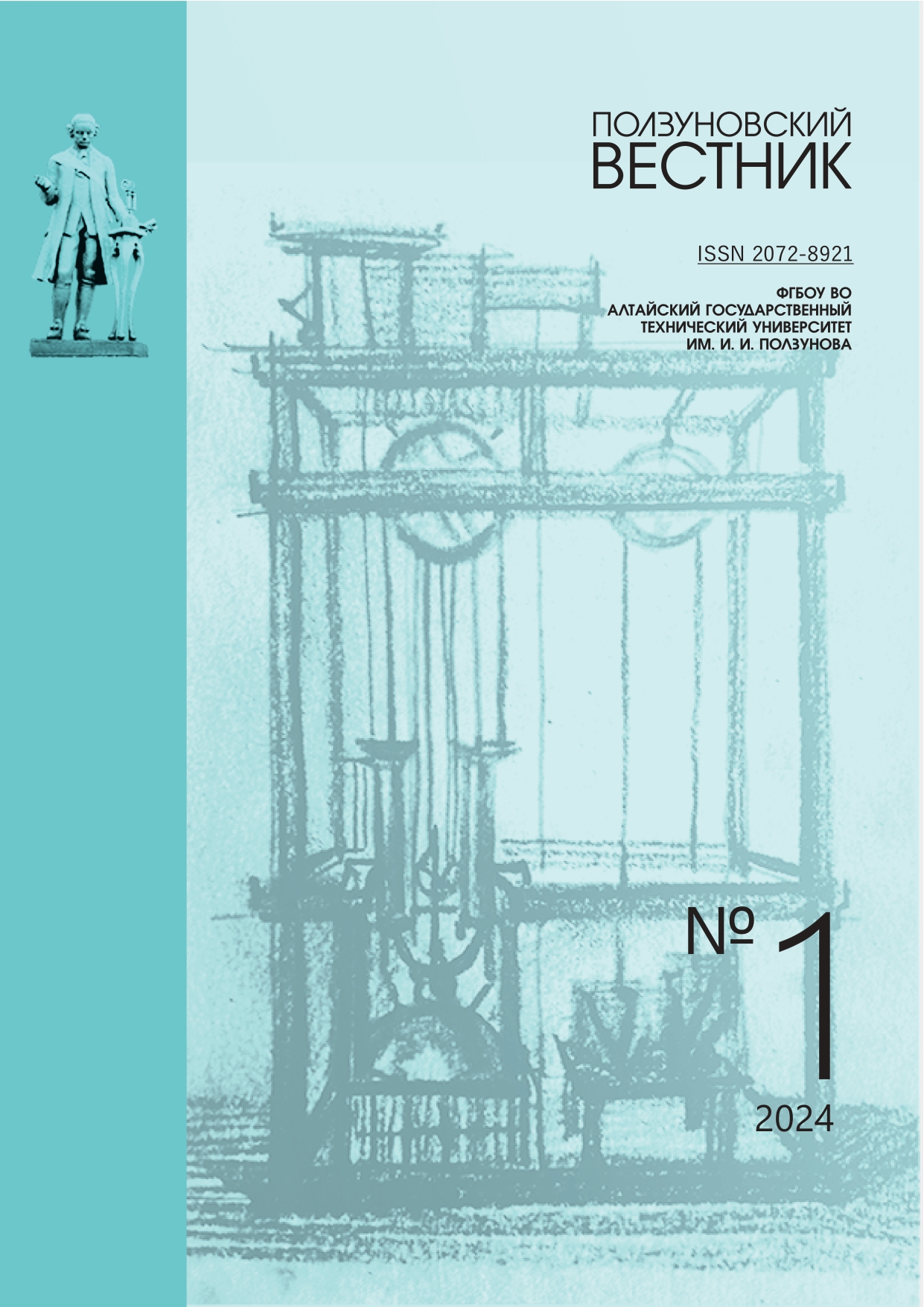ИССЛЕДОВАНИЕ ВЛИЯНИЯ ФАКТОРА ФОРМЫ МЕЖСЛОЙНЫХ ПЕРЕХОДОВ НА ПРОЦЕСС ТРЕЩИНООБРАЗОВАНИЯ МЕТАЛЛОКЕРАМИЧЕСКИХ ПЛАТ И КОРПУСОВ МИКРОСХЕМ
PACQMI
DOI:
https://doi.org/10.25712/ASTU.2072-8921.2024.01.032Аннотация
В статье рассмотрен процесс образования микротрещин металлокерамических плат в зоне локализации межслойных переходов, сформированных на основе вольфрамовых двухфракционных металлизационных паст со средним размером частиц 0,9 и 2,0 мкм, обеспечивающих электрическую связь между коммутационными слоями корпусов микросхем. Проведено исследование влияния «форм-фактора» межслойных переходов, их структуры и плотности размещения на процесс трещинообразования металлокерамических плат. Выявлен размерный эффект прямо-пропорциональной зависимости температурной усадки межслойных переходов от диаметра и плотности их размещения на плате, оказывающий значимое влияние на трещинообразование плат в зоне межслойных переходов. Установлено, что дисперсность порошкового наполнителя пасты, предназначенной для формирования межслойных переходов, оказывает значимое влияние на степень согласованности температурных усадок керамики и межслойного перехода, а значит и на величину напряжений на границе рассматриваемой системы элементов, которые способствуют образованию микротрещин. Выявлено, что тороидальная форма межслойного перехода, характеризующаяся наличием цилиндрической полости, которая в свою очередь является инициатором тангенциальных напряжений в объеме перехода, приводит к образованию микротрещин. При этом, сплошные межслойные переходы имеют повышенную устойчивость к температурным воздействия, но не исключают возможность образования микротрещин на границе «керамика – межслойный переход». Рассмотрены условия образования межслойных переходов тороидальной формы диаметром от 0,1 до 0,5 мм. Установлено доминирующее влияние вязкости металлизационных вольфрамовых паст в диапазоне от 1000 до 70000 Пуаз на возможность образования цилиндрической полости в объеме межслойного перехода. Предложены практические методы предотвращения их появления. Приведена оценка тангенциальных напряжений в объеме межслойных переходов тороидальной формы. Доказано, что образование внутренней полости в центре межслойного перехода, при его формировании, приводит к уменьшению температурной усадки на 4 % относительно значений температурной усадки сплошного межслойного перехода. Сравнительный анализ температурных усадок проводился для металлокерамических плат, содержащих в своем объеме межслойные переходы от 0,3 до 0,5 мм.
Библиографические ссылки
Ермолаев Е.В. Разгерметизация металлокерамических корпусов в области межслойных проводников в производственных условиях // Вестник ПГТУ. Сер. Радиотехнические и инфокоммуника-ционные системы. 2014. № 1. С. 87–92.
Lee J., Ma Q., Marieb T., Mack A.S., Fujimoto H., Flinn P., Woolery B., Keys L. Measurement and modeling or intrinsic stresses in CVDW lines. Mater Res. Soc. Symp. Proc. (In Russ.).
Ma Q., Lee J., Fujimoto H. (1997). Probing stresses in metal trenches using Raman piezospectros-copy. Advances in Electronic Packaging, (19), 8–16. (In Russ.).
Greenebaum B., Sauter A.I., Flinn P.A., Nix W.D. (1991). Stress in metal lines under passivation; compar-ison of experiment with finite element calculations. Journal of Applied Physics Letters, (17), 1845–1847. (In Russ.). DOI: 10.1063/1.105075.
Shen Y.L, Suresh S., Blech I.A. (1996). Stresses, curvatures, and shape changes arising from patterned lines on silicon wafers. Journal of Applied Physics, (3), 1388–1398. (In Russ.). DOI: 10.1063/1.362938.
Korhonen M.A, Borgesen P. (1993). Stress evo-lution due to electromigration in confined metal lines. Journal of Applied Physics, (73), 3790-3799. (In Russ.). DOI: 10.1063/1.354073.
Suo Z.L. (1998). Stable state of interconnect un-der temperature change and electric current. Journal of Acta Materialia, (11), 3725–3732.
Афонов О.Н. Влияние конструктивных и тех-нологических факторов на коррозию металлокера-мических корпусов интегральных схем: автореф. дис. … на соискание ученой степени кандидата техн. наук. Йошкар-Ола, 2005. 152 с.
Михеева Е.В. Контроль спаев металлокерамических плат и корпусов микросхем в условиях массового производства: автореф. дис. … на соискание ученой степени кандидата технических наук. Йошкар-Ола, 2004. 153 с.
Зуев А.В. Экспертная система контроля качества продукции в процессе производства метал-локерамических и коммутационных плат: автореф. дис. … на соискание ученой степени кандидата техн. наук. Йошкар-Ола, 2006. 149 с.
Otsuka К., Ucami Т., Sekihata М. (1981). Inter-facial bond strength in alumina ceramics metallized and covered with tungsten, Journal of the American Ceramic Society, (5), 540‒545. (In Russ.).
D.A. Chance. Refractory Metallization of Green Ceramic. (1970). Journal of Metallurgical Transation, (1), 685–694. (In Russ.). DOI: 10.1007/BF02811596.
Liu X.H., Suo Z., Fujimoto H. (2000). Develo-ping rules to avert cracking and debonding in integrat-ed circuits. Engineering Fracture Mechanics, (66), 387–402. (In Russ.).
Freund L., Kim K. Spiral cracking around a strained cylindrical inclusion in a brittle material and implications forvias in integrated circuits. MRS Sympo-sium Proceedings (Materials Research Society). (In Russ.).
Xia Z.C., Hutchinson J.W. (2000). Crack patterns in thin films. Journal of the Mechanics and Phys-ics of Solids, (48), 1107–1131. (In Russ.).
Ермолаев Е.В. Структурные напряжения в межслойных проводниках металлокерамических корпусов в производственных условиях // Актуальные вопросы науки, технологии и производства: материалы 1 Международной научно-практической конференции. Пенза, 2014. С. 67–72.
Способ измерения вязкости высоковязких жидкофазных сред: пат. 2738911 Рос. Федерация № 2020109808; заявл. 05.03.2020; опубл. 18.12.2020, Бюл. № 35. 8 с.
Загрузки
Опубликован
Как цитировать
Выпуск
Раздел
Лицензия
Copyright (c) 2024 Евгений Валерьевич Ермолаев, Илья Александрович Жуков, Дмитрий Александрович Ткачев

Это произведение доступно по лицензии Creative Commons «Attribution» («Атрибуция») 4.0 Всемирная.
















 .
. Контент доступен под лицензией
Контент доступен под лицензией 
